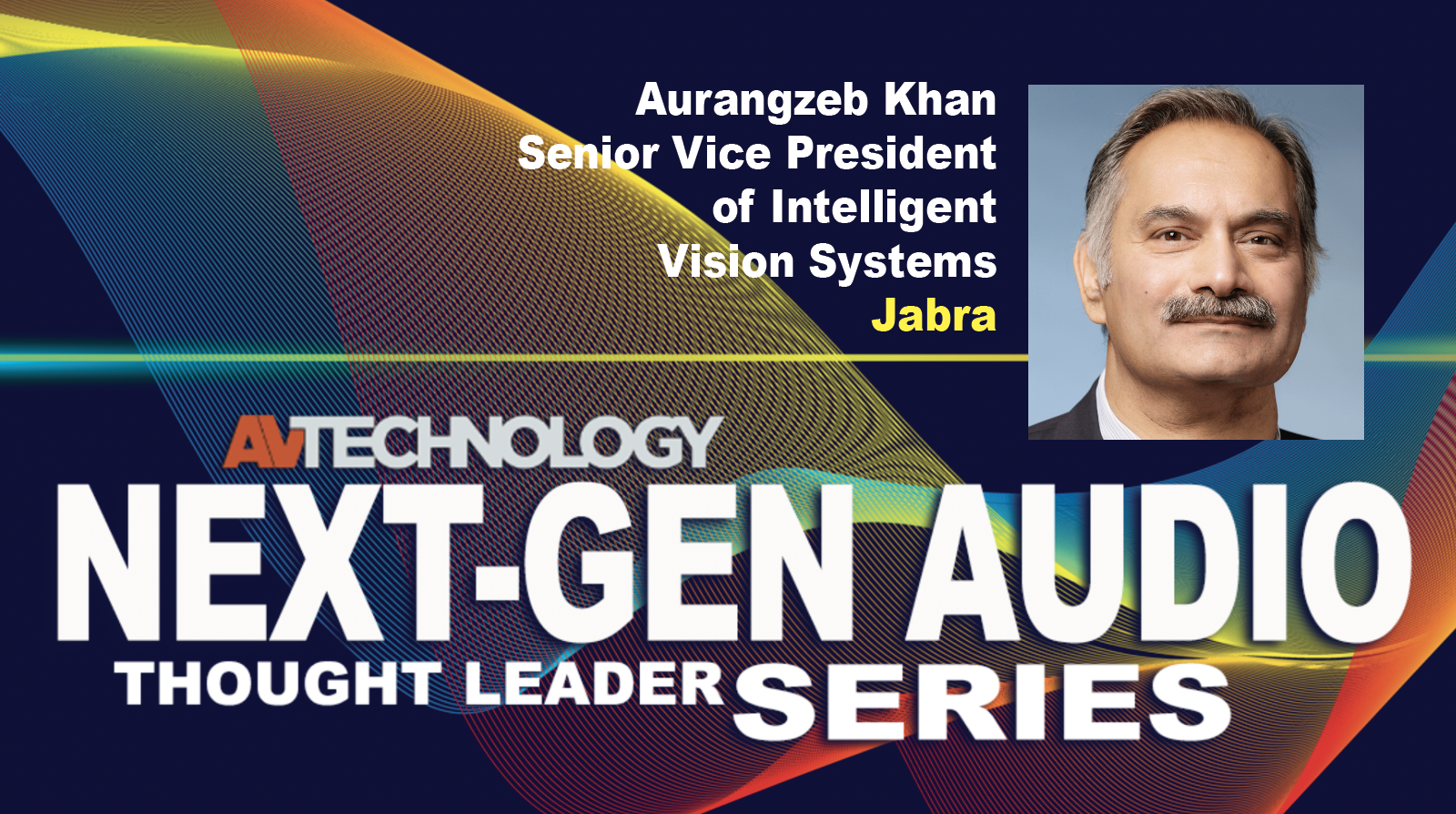On Next-Gen Audio: Jabra
Aurangzeb Khan, Senior Vice President of Intelligent Vision Systems at Jabra shares insight into trends and best practices for implementing next-gen audio into meeting spaces and classrooms.

AVT Question: Please share insight and best practices for implementing next-gen audio into meeting spaces and classrooms.
Thought Leader: Aurangzeb Khan, Senior Vice President of Intelligent Vision Systems at Jabra
Today, 80 percent of all meetings are now either fully virtual or hybrid, with only 20 percent happening fully in person. However, with employers focused on helping their remote workers transform homes into dynamic remote work hubs over the last few years, it’s clear that the in-office experience has fallen behind.
Thirty-seven percent of employees say they often feel left out of the conversation in hybrid meetings, and 42 percent say they can’t hear what’s being said in hybrid meetings. So how can employers get their offices up to speed? By reprioritizing meeting spaces for virtual communication and utilizing new, inclusive collaboration technology. This begins with selecting conferencing audio devices that ensure everyone in and out of the office can participate and be heard—equally and authentically.
Employers should look to create interaction-based versus task-based spaces that provide the flexibility and collaboration employees need." —Aurangzeb Khan, Senior Vice President of Intelligent Vision Systems at Jabra
Conferencing audio technology should be designed for the portability and flexibility that today’s hybrid workers need, and purpose-built with inclusive meetings in mind. They should be engineered with advanced audio features so everyone feels like they’re together in the same room, even when they’re spread across the globe. Features like full duplex audio make a significant difference in allowing conversations to flow freely in both directions, just like they would in person. Voice level normalization ensures everyone’s voice is equalized to the same volume level. State-of-the-art microphones are critical to field sound from all directions, harnessing every change in voice tone, so every nuance is picked up. And noise reduction technology is important to drown out the tapping of keyboards and background noises.
Where we work has changed a lot since the traditional office space of the past. In offices, employers should look to create interaction-based versus task-based spaces that provide the flexibility and collaboration employees need, and outfit them with the right cutting-edge conferencing technology for all voices to be heard in natural, flowing conversation.
[15 AV/IT Thought Leaders On Streaming]
A daily selection of features, industry news, and analysis for tech managers. Sign up below.

Cindy Davis is the brand and content director of AV Technology (AVT). She was a critical member of the AVT editorial team when the title won the “Best Media Brand” laurel in the 2018 SIIA Jesse H. Neal Awards. Davis moderates several monthly AV/IT roundtables and enjoys facilitating and engaging in deeper conversations about the complex topics shaping the ever-evolving AV/IT industry. She explores the ethos of collaboration, hybrid workplaces, experiential spaces, and artificial intelligence to share with readers. Previously, she developed the TechDecisions brand of content sites for EH Publishing, named one of the “10 Great Business Media Websites” by B2B Media Business magazine. For more than 25 years, Davis has developed and delivered multiplatform content for AV/IT B2B and consumer electronics B2C publications, associations, and companies. A lifelong New Englander, Davis makes time for coastal hikes with her husband, Gary, and their Vizsla rescue, Dixie, sailing on one of Gloucester’s great schooners and sampling local IPAs. Connect with her on LinkedIn.
